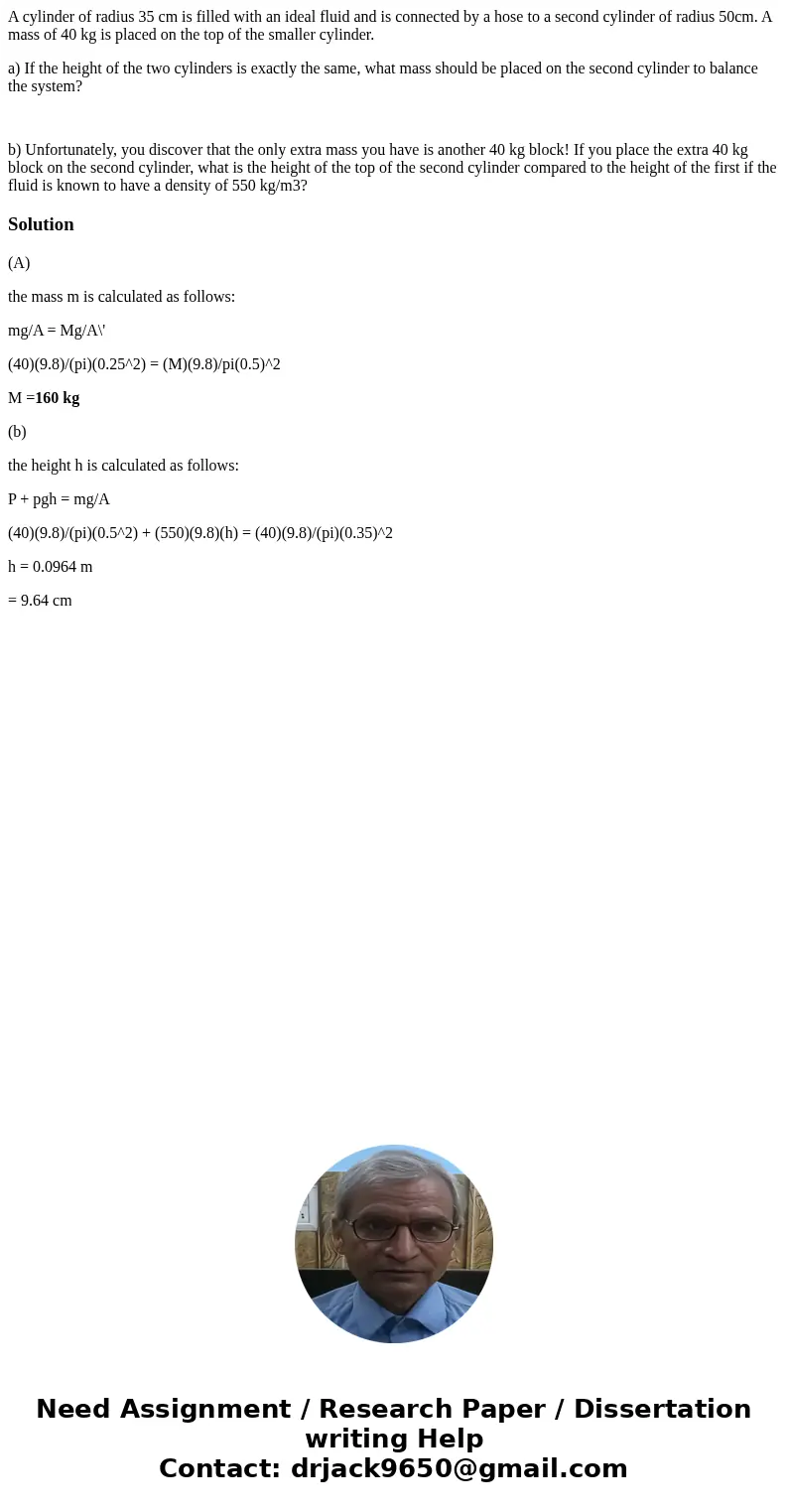A cylinder of radius 35 cm is filled with an ideal fluid and
A cylinder of radius 35 cm is filled with an ideal fluid and is connected by a hose to a second cylinder of radius 50cm. A mass of 40 kg is placed on the top of the smaller cylinder.
a) If the height of the two cylinders is exactly the same, what mass should be placed on the second cylinder to balance the system?
b) Unfortunately, you discover that the only extra mass you have is another 40 kg block! If you place the extra 40 kg block on the second cylinder, what is the height of the top of the second cylinder compared to the height of the first if the fluid is known to have a density of 550 kg/m3?
Solution
(A)
the mass m is calculated as follows:
mg/A = Mg/A\'
(40)(9.8)/(pi)(0.25^2) = (M)(9.8)/pi(0.5)^2
M =160 kg
(b)
the height h is calculated as follows:
P + pgh = mg/A
(40)(9.8)/(pi)(0.5^2) + (550)(9.8)(h) = (40)(9.8)/(pi)(0.35)^2
h = 0.0964 m
= 9.64 cm

 Homework Sourse
Homework Sourse